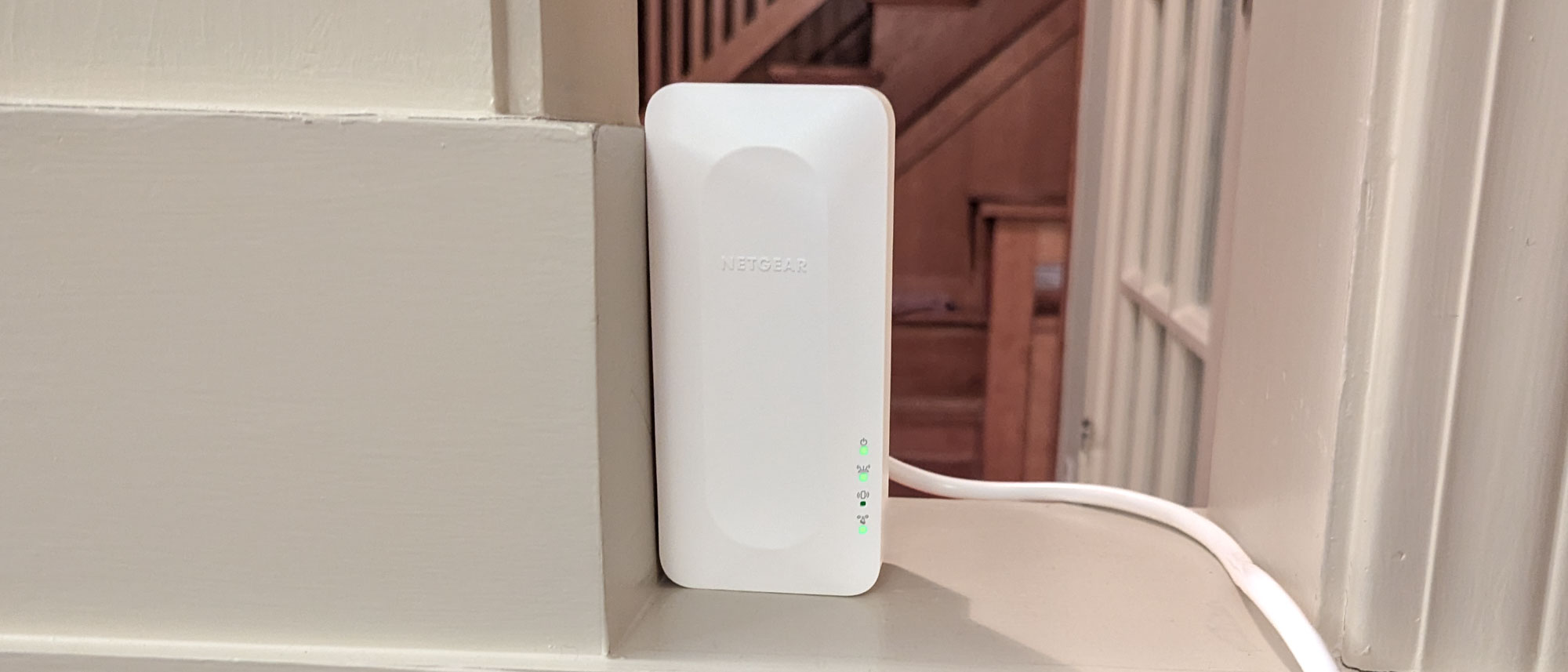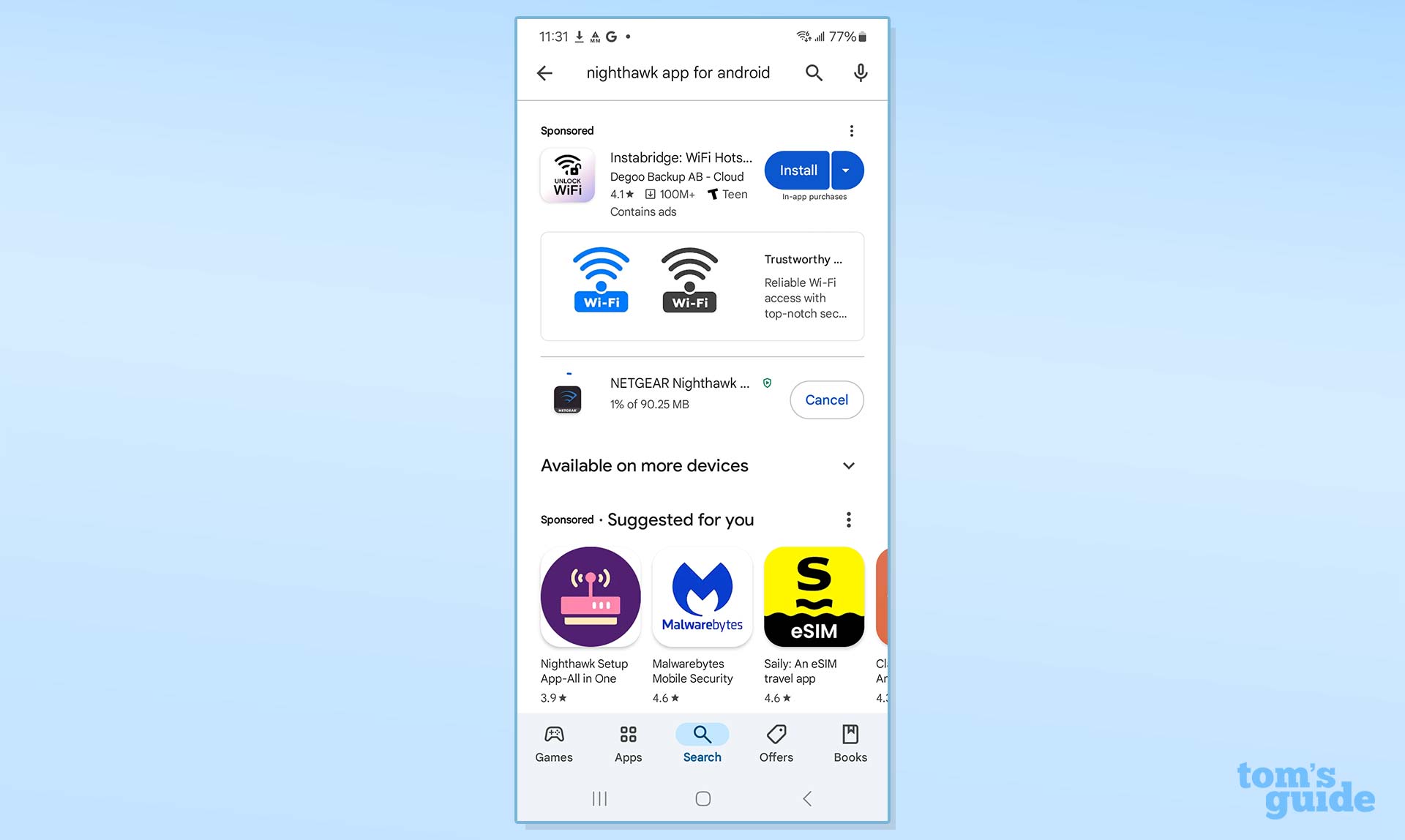Tom's Guide Verdict
It may not be the fastest or smallest Wi-Fi extender, but Netgear’s Nighthawk EAX17 can reliably push data into previously unconnected areas although its three-prong plug may be a nonstarter for those in older homes.
Pros
- +
Mid-range data speeds
- +
Dual-band Wi-Fi 6 operations
- +
Gigabit per second Ethernet port
- +
Economical to use
Cons
- -
No 6GHz access
- -
Three-prong plug
- -
Doesn’t have USB port
- -
90 day support policy
Why you can trust Tom's Guide
Wi-Fi Spec: AX3000
Number of Antennas/Removable: 3/No
Ports: Gigabit per second Ethernet
Peak 802.11ax performance: 383.1 Mbps (10 feet from extender)
Range: 105 feet
Size: 5.8 x 2.7 x 1.9 inches
Estimated Annual Electricity Cost: $5.00
While it has the potential to move lots of data into previously unconnected areas of a home, the Netgear Nighthawk EAX17 suffers from having a three-prong plug, making it a hassle for those in older homes with ungrounded outlets.
Still, it’s able to extend a Wi-Fi 6-powered home network and has a gigabit per second Ethernet port but lacks the ability to tap into the high-performance 6GHz wireless data band.
Read the review to see if the EAX17 is one of the best Wi-Fi extenders you can buy today along with whether or not it deserves a place in your home.
Netgear Nighthawk EAX17 review: Pricing and availability
Priced at $130, the Netgear Nighthawk EAX 17 is among the newest Wi-Fi extenders on the market and not discounted anywhere I could find. The Wi-Fi 6 EAX15 is rated at AX1800 and sells for as little as $100.
The EAX17 can add up to 1,500 square feet of Wi-Fi coverage, according to Netgear.
Netgear Nighthawk EAX17 review: Design
Long and narrow, the white Netgear Nighthawk EAX17 extender is larger than the Linskys RE7350 at 5.8 x 2.7 x 1.9 inches. This leaves just enough room to use an adjacent AC outlet, although its three-prong plug makes it a tough sell in older homes that lack grounded outlets. Powered by an extension cord, it can stand on its own.

Like so many other extenders, it does without an on/off switch but there are ones for starting the Wi-Fi Protected Setup (WPS) sequence for quickly adding it to a network as well as a recessed reset key. Below is a gigabit per second Ethernet port for adding a printer, scanner or network appliance to the LAN that pales in comparison to the RE655BE’s 2.5 Gbps networking. The EAX17 also lacks a USB port for networking a data drive.
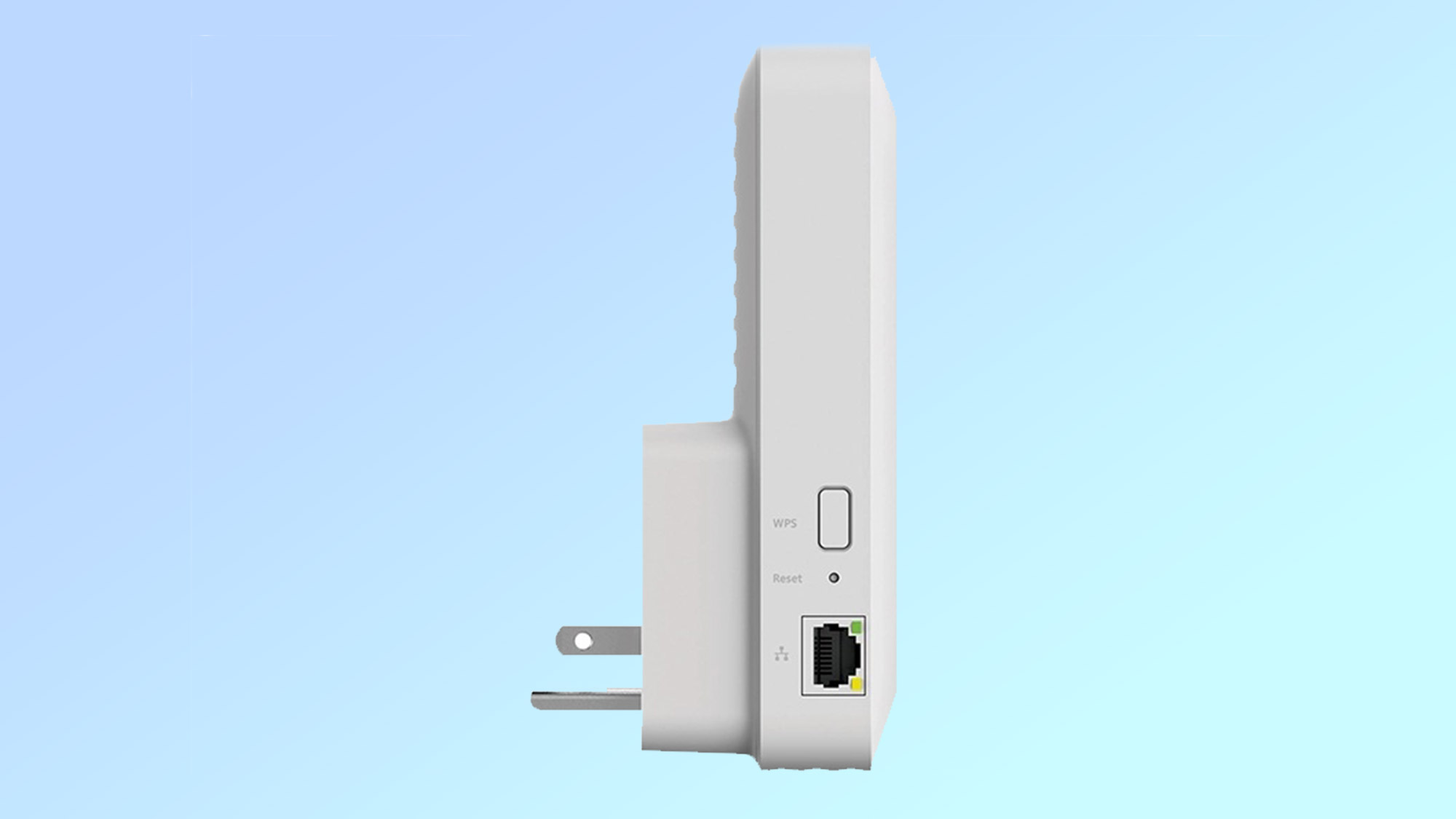
Its top and back have cooling vents and the front’s four LEDs show what’s going on below the surface. In addition to an on/off light, there are ones that indicate the quality of the online connection, if client devices are connected and if WPS is being used.
Get instant access to breaking news, the hottest reviews, great deals and helpful tips.
Netgear Nighthawk EAX17 review: Performance
A mid-range performer, the EAX17 did a good job of filling in the blanks in my 3,500 square foot home’s Wi-Fi network based on results from using the Keysight IxChariot networking benchmark. With it set to mimic 10 heavy use clients and the EAX17 extender set up 40 feet from a Netgear Nighthawk RS600 router, the EAX17 hit a peak of 415.9 Mbps with the Sharp Swift Edge 16 test system next to the extender. That’s right on the heels of the RP-AX58’s 449.6 Mbps but well off the 663.5 Mbps pace set by the Wi-Fi 7-powered RE655BE.
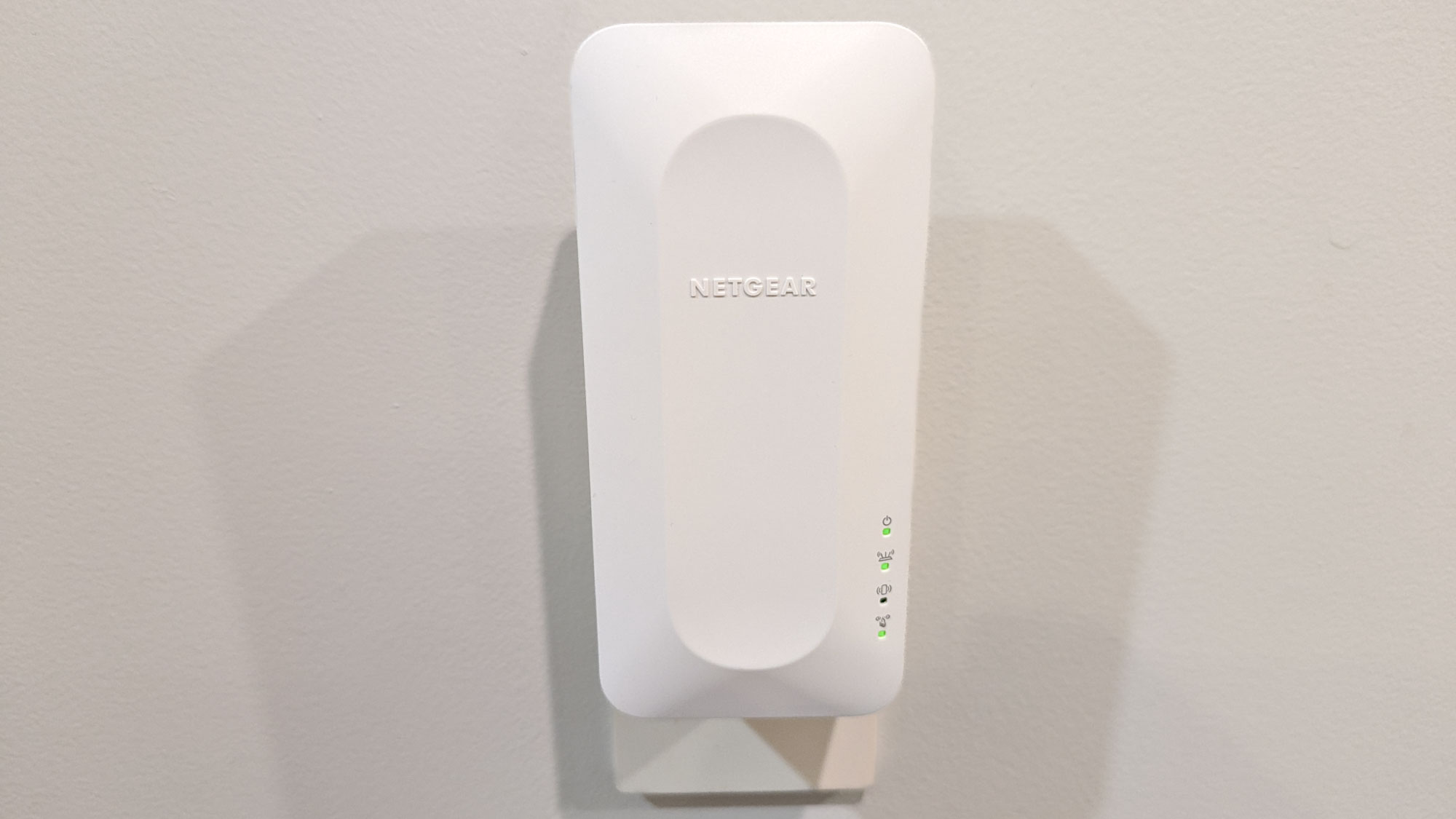
When I moved the Edge 16 notebook to a more realistic distance of 10 feet from the extender, its throughput dropped by 8% to an average of 383.1 Mbps. That’s right in the middle of the pack ahead of the Linksys RE7350’s 203.7 Mbps faster and well behind the RE655BE’s 719.5 Mbps, which uses Wi-Fi 7’s expanded bandwidth.
At 40 feet, the data flow dropped further to 197.9 Mbps. This puts it ahead of the RE7350’s 80.6 Mbps and on a par with the RP-AX58’s 201.1 Mbps of Throughput. It was well behind the RE655BE’s 376.7 Mbps.
The EAX17 easily handled emails, music, 4K videos and the occasional gaming session. It had a 105 foot range.
| Row 0 - Cell 0 | Asus RP-AX58 | Linksys RE7350 | Netgear EAX17 | TP-Link RE655BE |
10 feet | 490.2 Mbps | 203.7 Mbps | 383.1 Mbps | 719.5 Mbps |
40 feet | 201.1 Mbps | 80.6 Mbps | 197.9 Mbps | 376.7 Mbps |
While working, the EAX17 used all of 3.6 watts, about half what many other extenders consume. In fact, it’s one of the most economical extenders to use. Left on 24/7, it should cost about $5 a year if you pay the national average of 16 cents per kilowatt hour of electricity. There aren’t any power conservation settings to lower that, but at the lowest power draw you won’t need any.
It hit a peak of 95.7 degrees Fahrenheit at its top vent and relies on passive heat transfer to keep its cool.
Netgear Nighthawk EAX17 review: Features
The EAX17 is Wi-Fi 6 all the way. Powered by a 1.3GHz dual-core processor, it re-transmits Wi-Fi data over the 2.4 and 5.0GHz data bands. On the downside, it lacks the ability of the TP-Link RE655BE to connect over the high-performance 6GHz band or use 320MHz data channels.
Still, the EAX17 uses beamforming, MU-MIMO and 1024 Quadrature Amplitude Modulation (QAM) to squeeze data out of thin air. It uses 2x2 streaming for the 2.4GHz band and 3x3 data flow for the 5GHz band. All told, the EAX17 has an AX3000 rating, can service up to 20 devices and can also be set up to operate as a Wi-Fi extender or access point.
Netgear Nighthawk EAX17 review: Setup and software
The EAX17 can be connected with a network’s router in three ways, starting with WPS (Wi-Fi Protected Setup). Most will use the Nighthawk app for iOS and Android but Netgear also offers the option of using the extender’s internal interface via a direct browser connection.
I started by plugging the EAX17 in 40 feet from the network’s router. After accepting Netgear’s terms and conditions, I created an account.
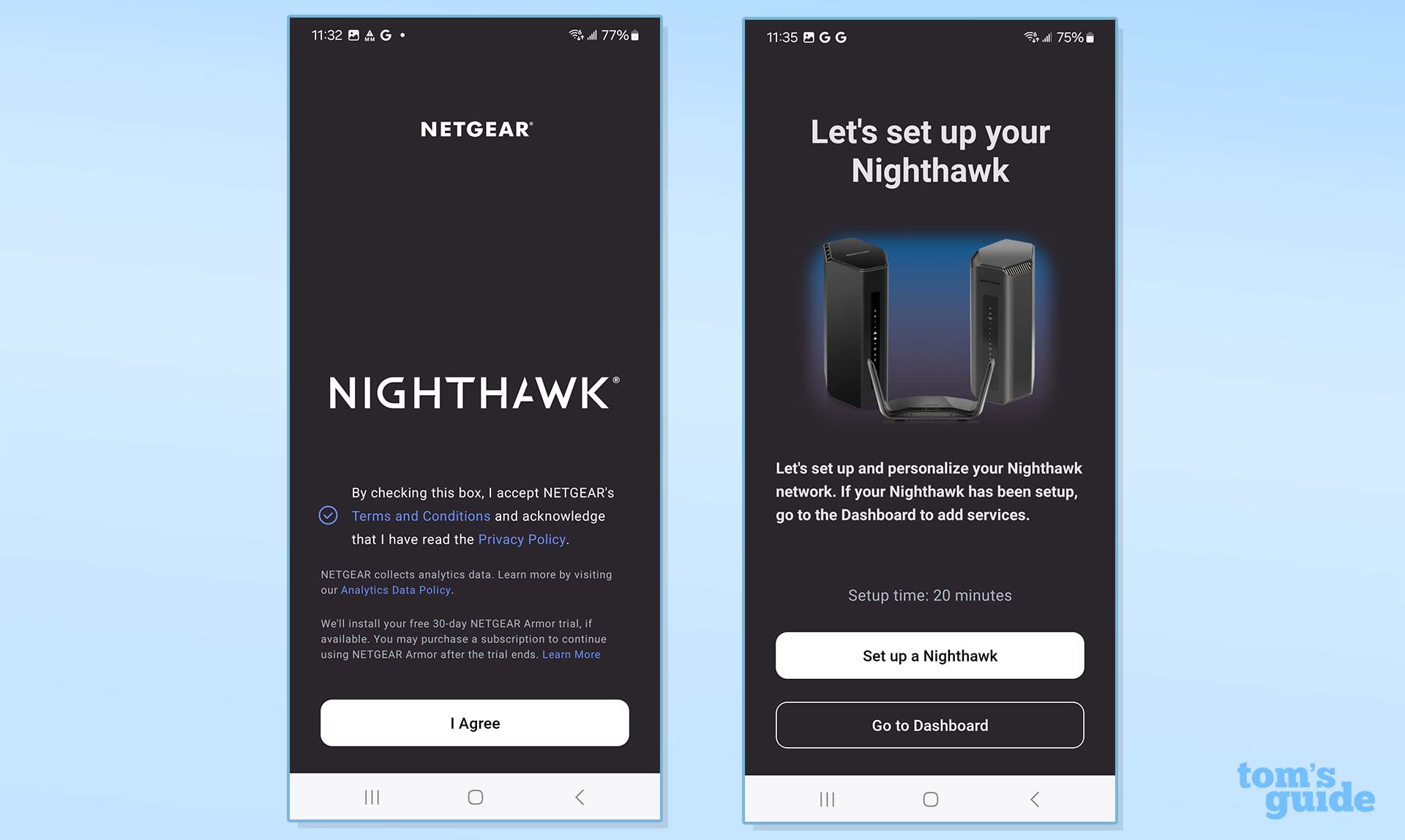
Once I logged in and verified my existence with an email, I set the phone’s Wi-Fi connected to the EAX17’s default LAN (“Netgear_Ext”). I selected Range Extender and the app quickly found the hardware.
I picked the network to rebroadcast and entered the passcode. The app allows separate SSIDs for the 2.4 and 5.0GHz networks, but I chose to use a single one to ease roaming.
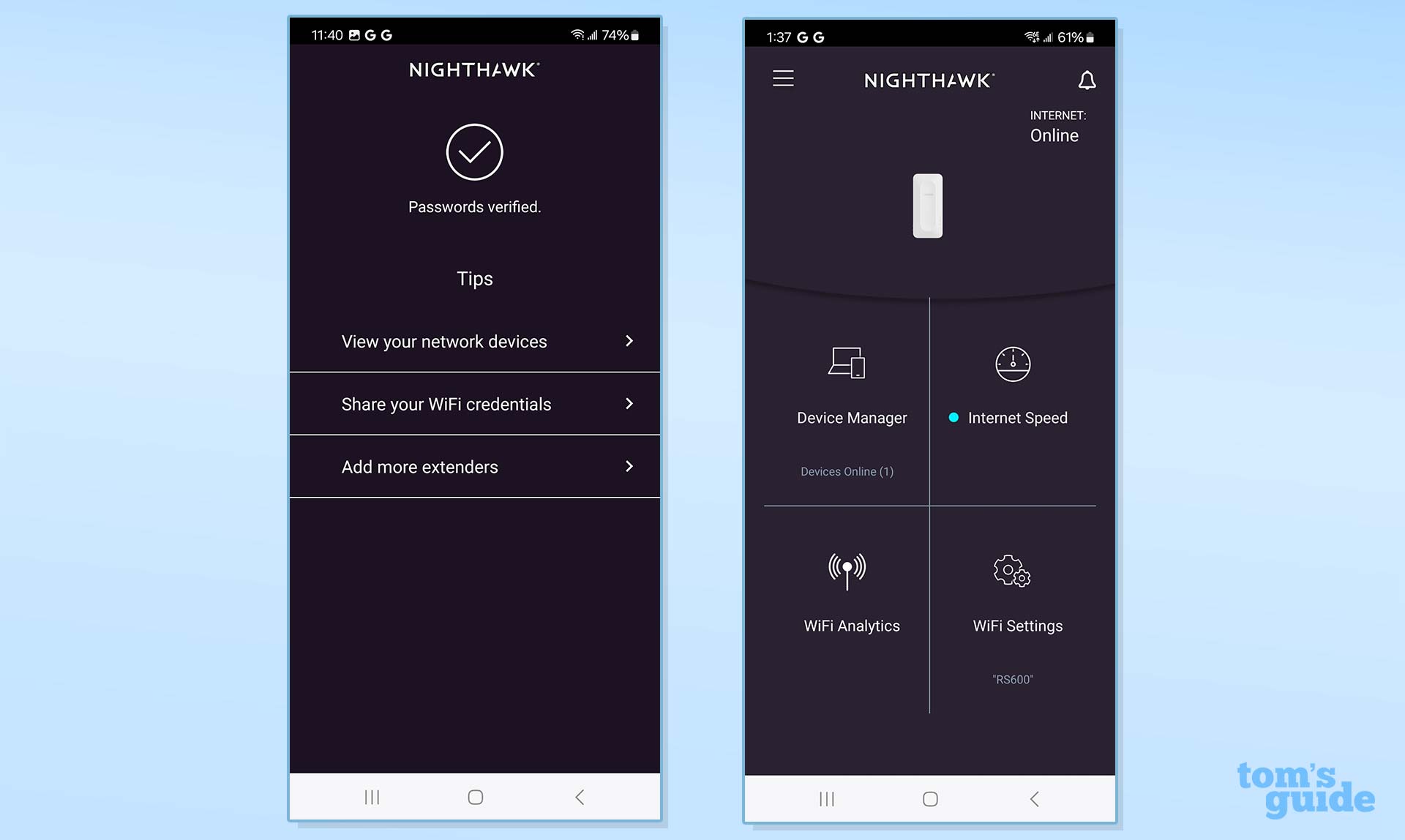
A few minutes later, it was all set up, taking 9 minutes and 50 seconds. The extender connected on the first try.
Using the connected browser approach to make configuration changes, the main screen has the basics. In addition to signal strength for each band, it shows their theoretical top speed as well as the status of the optional guest network.
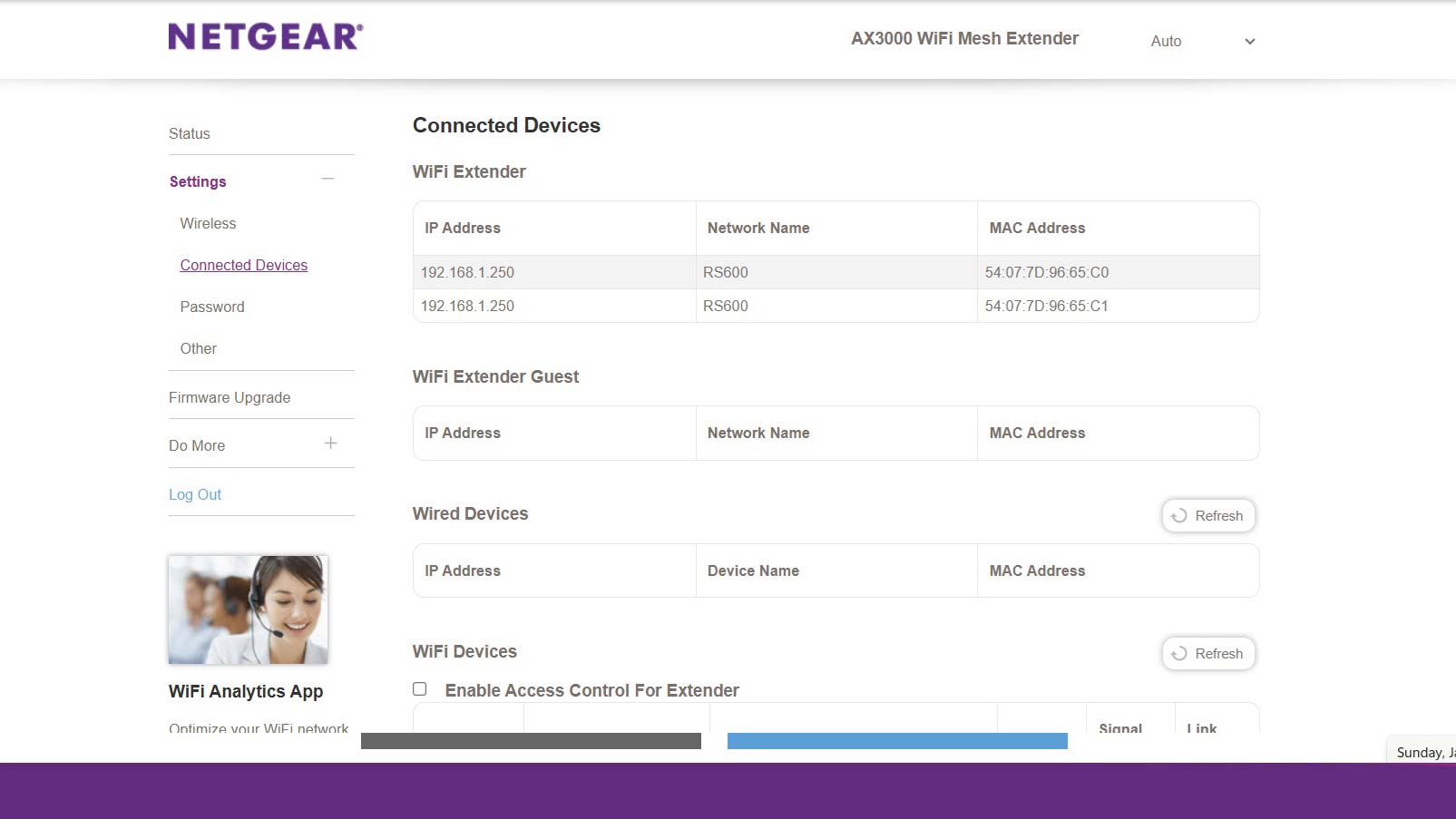
In addition to turning off the extender’s lights, the interface allowed me to check for new firmware updates and install them.

Finally, the extender’s “Other” section is a bit of a catch-all that should not be ignored. It hides critical things like backing up and restoring the extender’s settings as well as restarting the device. It’s where an overall system reset to its original firmware and settings can be accomplished.
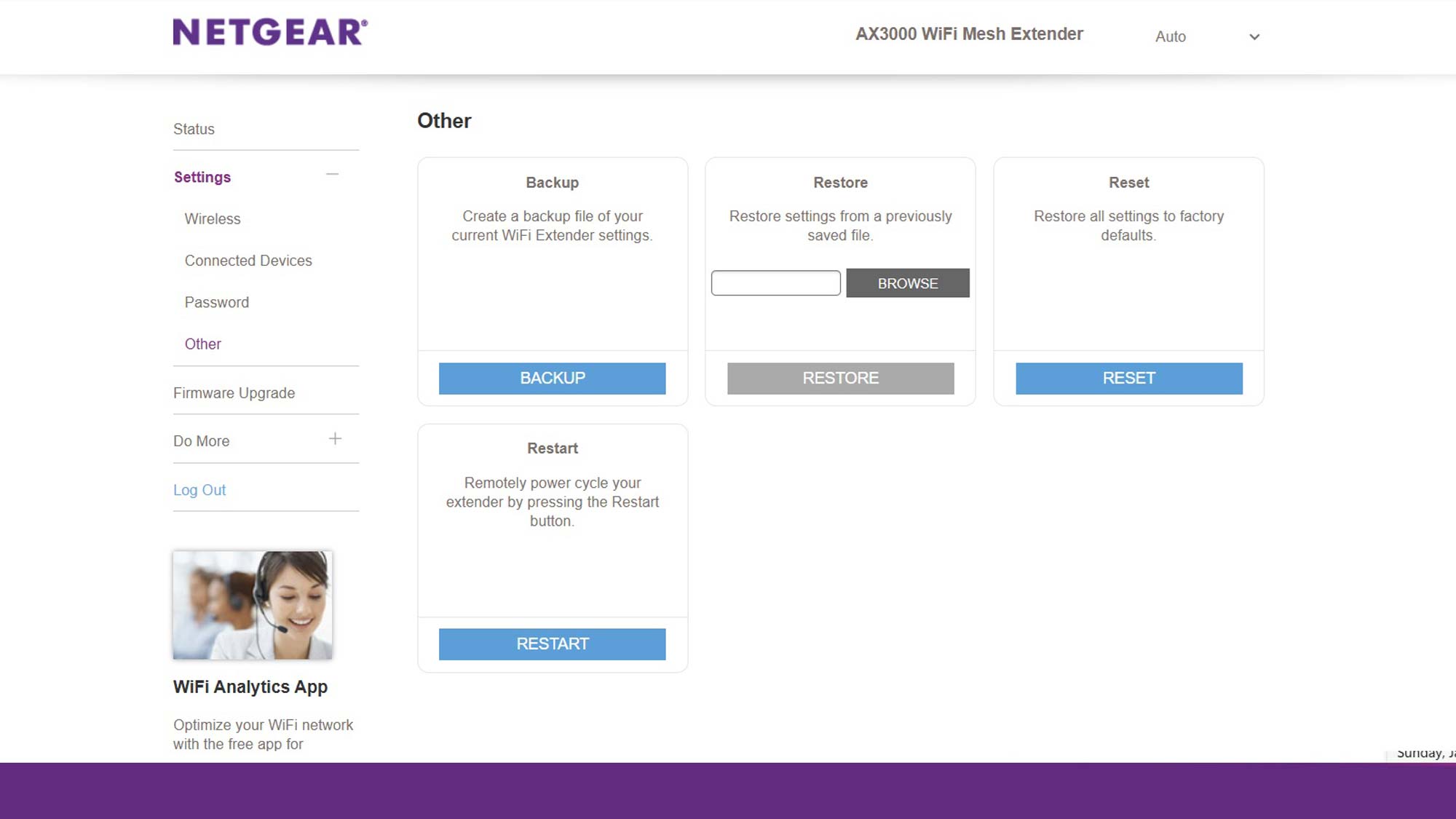
Netgear Nighthawk EAX17 review: Warranty and support
Like most extenders, the EAX17 comes with a one-year warranty and life of product support. It’s second best compared to TP-Link’s two years of coverage. More to the point, Netgear’s scant 90 days of support shortchanges buyers used to getting life of product help without an annual paid subscription.
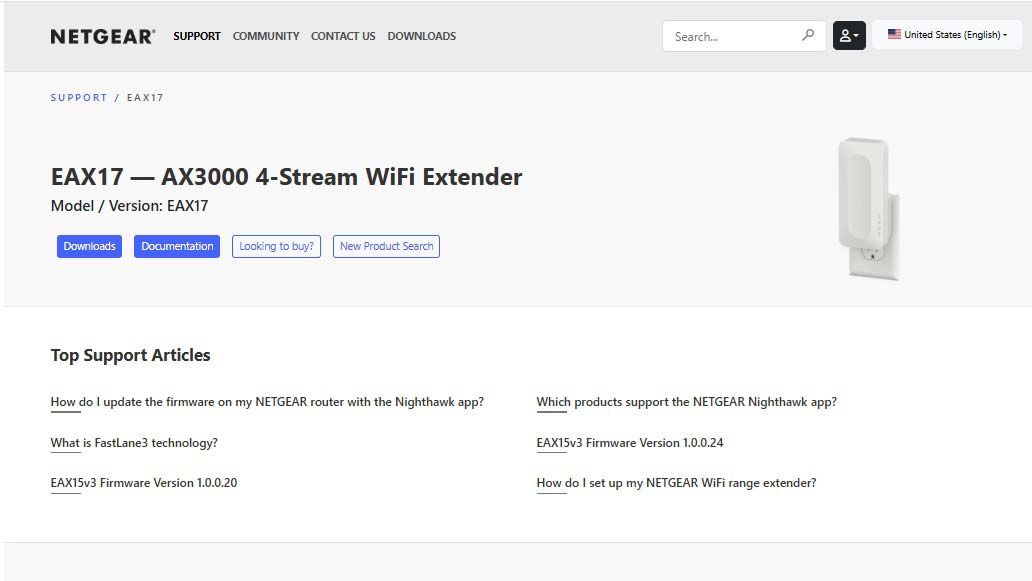
In addition to lots of help with installation, updating the firmware and making configuration changes, the troubleshooting section can help figure out what’s wrong with the product. The connectivity and performance section can help goose throughput. There’s a good manual available too.
Netgear Nighthawk EAX17 review: Verdict
An easy way to push a Wi-Fi network into unconnected areas, the Netgear Nighthawk EAX17 has everything that Wi-Fi 6 has to offer but lacks the 6GHz available with Wi-Fi 6E or Wi-Fi 7. Its throughput readings and range were middle of the pack but it was a reliable way to push data into previously unconnected areas. The most economical extender to use, though its grounded plug might be a turn off to those in older homes without three-prong AC outlets.
If you care as much about electricity bills as raw speed, the EAX17 could make your home a happier Wi-Fi place.
Brian Nadel is a freelance writer and editor who specializes in technology reporting and reviewing. He works out of the suburban New York City area and has covered topics from nuclear power plants and Wi-Fi routers to cars and tablets. The former editor-in-chief of Mobile Computing and Communications, Nadel is the recipient of the TransPacific Writing Award.
You must confirm your public display name before commenting
Please logout and then login again, you will then be prompted to enter your display name.
